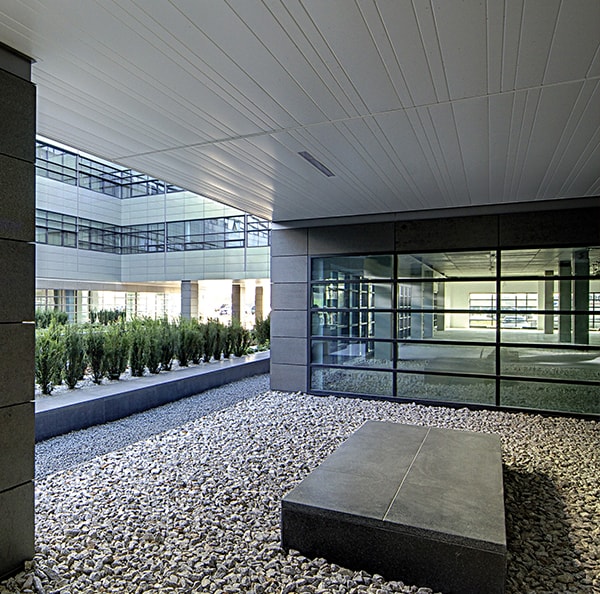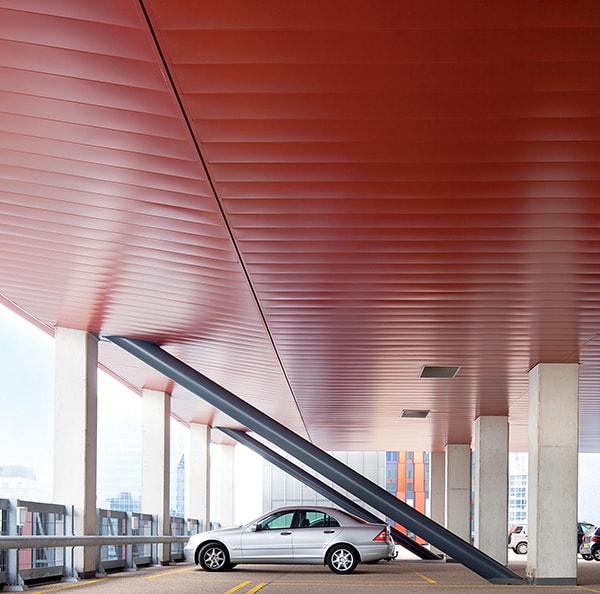Exterior metal ceiling panels offer a robust and stylish solution for enhancing the architectural appeal of your outdoor spaces. Whether you’re renovating a commercial building facade or upgrading the exterior of your residential property, these versatile panels provide both aesthetic charm and functional benefits. In this detailed article, we will delve into everything you need to know about exterior metal ceiling panels, including their advantages, installation considerations, maintenance tips, and why they are increasingly popular in modern construction and design.

What are Exterior Metal Ceiling Panels?
Exterior metal ceiling panels are architectural elements designed to cover and protect ceilings in outdoor environments. Made from durable metals such as aluminum, steel, or copper, these panels are engineered to withstand various weather conditions while adding a distinctive visual appeal to buildings. They come in a variety of finishes, textures, and configurations, making them suitable for a wide range of exterior applications.
Benefits of Exterior Metal Ceiling Panels
Weather Resistance
One of the primary advantages of exterior metal ceiling panels is their superior weather resistance. These panels are designed to withstand exposure to sunlight, rain, wind, and temperature fluctuations without warping, fading, or corroding. This durability ensures long-term performance and reduces the need for frequent maintenance.
Architectural Versatility
Exterior metal ceiling panels offer architectural versatility, allowing designers and builders to achieve a wide range of aesthetic effects. Whether you prefer a sleek, modern look or a more traditional appearance, metal panels can be customized to complement the overall design scheme of your building facade or outdoor structure.
Sustainability
Metal is a recyclable material, making exterior metal ceiling panels an environmentally friendly choice for sustainable construction projects. Using recycled metal or opting for panels with high recyclability contributes to green building practices and reduces the environmental impact of construction activities.
Ease of Maintenance
Unlike organic materials such as wood or stucco, metal requires minimal maintenance to retain its appearance and functionality. Routine cleaning with mild detergent and water is usually sufficient to remove dirt and debris from metal ceiling panels. Periodic inspections for signs of wear or damage can help prevent costly repairs and ensure continued performance.
Installing Exterior Metal Ceiling Panels
Considerations for Installation
- Surface Preparation: Ensure that the surface where the panels will be installed is clean, dry, and structurally sound. Proper preparation helps to achieve a secure attachment and prolongs the lifespan of the metal panels.
- Fastening Methods: Select appropriate fastening methods based on the type of metal panels and the substrate. Options may include screws, clips, or adhesive systems designed for exterior applications. Follow manufacturer guidelines for optimal installation practices.
- Professional Installation: While some metal ceiling panels can be installed by skilled DIYers, complex installations or large-scale projects may require professional assistance. Professional installers ensure precision and adherence to safety standards during the installation process.
Maintenance Tips for Exterior Metal Ceiling Panels
Maintaining exterior metal ceiling panels is straightforward but essential to preserve their appearance and performance over time. Here are some maintenance tips to keep your panels looking their best:
Regular Cleaning
- Clean metal panels regularly using a soft cloth or sponge and a mild detergent solution. Avoid abrasive cleaners or tools that could scratch the surface or damage protective coatings.
Inspection and Repairs
- Periodically inspect metal panels for signs of corrosion, dents, or loose fasteners. Address any issues promptly to prevent further damage and ensure structural integrity.
Protective Coatings
- Consider applying protective coatings or finishes to enhance durability and resistance to environmental factors such as UV exposure and moisture. Consult with a professional to determine the most suitable coating for your specific metal panels.
Why Choose Exterior Metal Ceiling Panels?
Durability and Longevity
Exterior metal ceiling panels are renowned for their durability and longevity, making them a wise investment for property owners seeking long-term solutions. They offer reliable protection against the elements while maintaining their aesthetic appeal over many years.
Design Flexibility
Metal panels provide design flexibility, allowing architects and designers to create customized looks that enhance the overall aesthetic of any exterior space. Whether used as a standalone feature or integrated into a larger architectural design, metal panels offer endless possibilities for creative expression.
Value Addition
Installing exterior metal ceiling panel can increase the market value of a property by improving its curb appeal and visual appeal. They contribute to a modern and sophisticated appearance that attracts potential buyers or tenants.
Popular Brands and Models
When selecting exterior metal ceiling panel, consider reputable brands known for their quality craftsmanship and innovative designs:
- Alucobond: Offers a range of aluminum composite panels known for their versatility and architectural excellence.
- Morin Corporation: Specializes in metal wall and ceiling panels that combine durability with aesthetic appeal.
- Kingspan: Provides insulated metal panels suitable for exterior applications, offering energy efficiency and design flexibility.
Conclusion
Exterior metal ceiling panel are a practical and stylish choice for enhancing the exterior of any building or outdoor structure. Their durability, aesthetic versatility, and minimal maintenance requirements make them an attractive option for architects, builders, and property owners alike. By understanding the benefits, installation considerations, and maintenance practices outlined in this guide, you can confidently select and install exterior metal ceiling panel that elevate the visual appeal and functionality of your outdoor spaces.
